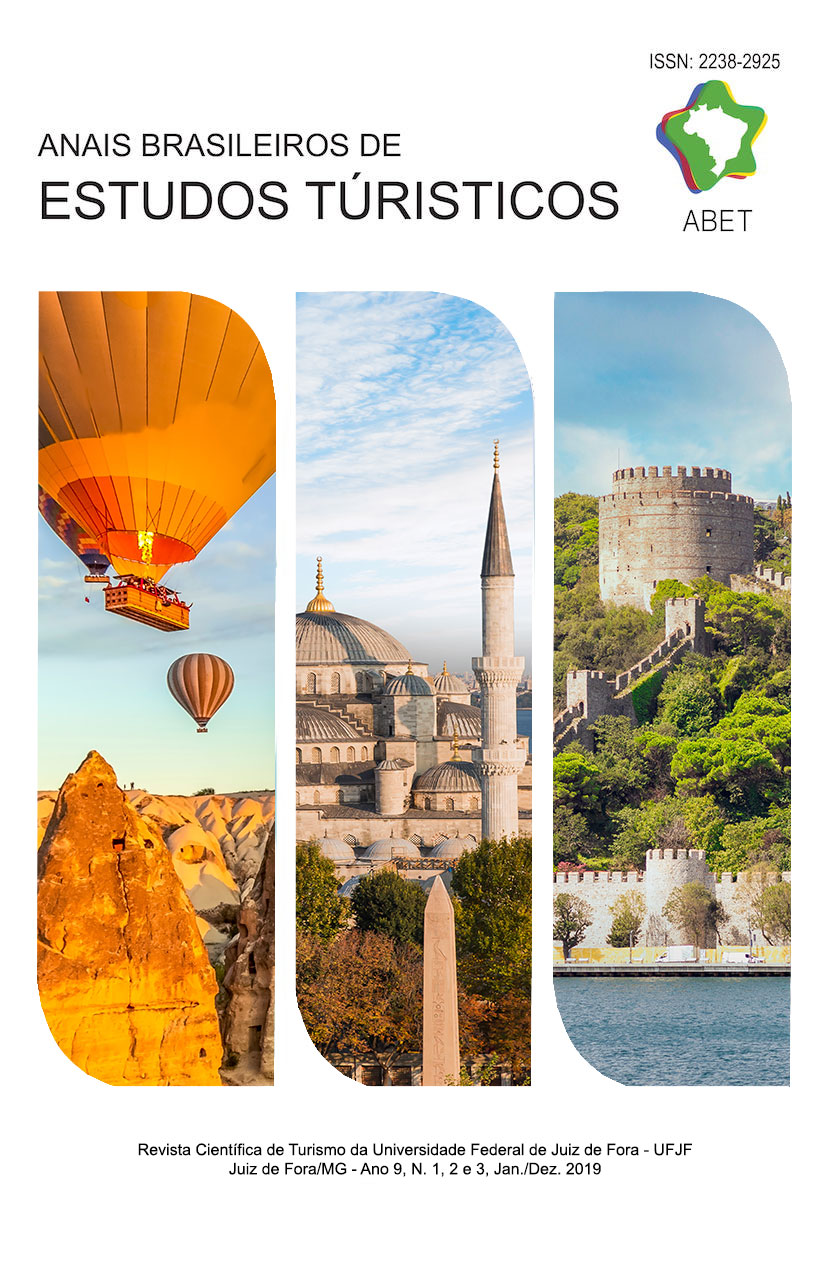Turkey’s Food Image, Travelers’ Revisit Intention and Tourist Expenditures
Turkey's Food Image
DOI:
https://doi.org/10.34019/2238-2925.2019.v9.27130Resumen
Este articulo busca explorar la imagen de los alimentos de Turquía midiendo las percepciones de los visitantes y su efecto en su intenció de volver a visitar el país. La imagen de los alimentos se puede definir como creencias, sentimientos e impresiones de los viajeros sobre alimentos y bebidas, establecimientos que sirven alimentos y bebidas, cultura culinaria y actividades relacionadas con alimentos y bebidas de un destino. Las preguntas fundamentales de esta investigación fueran identificar: si existe una relación entre la imagen de los alimentos, la satisfacción del turista y la intención de volver a visitar, en qué medida los visitantes tienen intención de participar en las actividades de turismo gastronómico, y cuál es el gasto promedio en alimentos y bebidas de los visitantes. Fueran distribuidos 407 cuestionarios a visitantes extranjeros que viajaban a Turquía. Se ha determinado que la imagen alimentaria percibida tiene tres dimensiones: cultura culinaria y gastronomía, actividades gastronómicas y establecimientos de alimentos y bebidas. Los visitantes están muy satisfechos con la comida y las bebidas, y los restaurantes en Turquía, y además están interesados en la gastronomía local. Los resultados muestran que los alimentos y bebidas más recordados por los visitantes son Kebap, Rakı, Döner, Berenjena y Baklava. La imagen de los alimentos del destino afecta a la intención de volver a visitar el destino. Durante su estadía en Turquía, el gasto promedio de los visitantes en alimentos y bebidas es de $575, que es el 18.9% de su presupuesto de vacaciones. La gastronomía es un factor influyente en la satisfacción de los visitantes, incluso puede ser una atracción turística por sí misma, ya que los visitantes tienden a participar en actividades relacionadas con la gastronomía durante sus viajes.
Descargas
Descargas
Publicado
Cómo citar
Número
Sección
Licencia
This journal provides immediate open access to its content, following the principle that providing free scientific knowledge to the public provides greater democratization of world knowledge.
Authors must agree to the following terms relating to copyrights:
(a) Authors keep all copyright and grant the to the journal the right of first publication, with the work simultaneously licensed under the Creative Commons Attribution License that allowing job sharing with recognition of authorship of the work and initial publication in this journal.
(b) Authors are allowed to assume additional contracts separately, for non-exclusive distribution of the version of the work published in this journal (e.g. publish in institutional repository or book chapter), with recognition of authorship and initial publication in this magazine.
(c) Authors are allowed and are encouraged to publish and distribute their work online (e.g. in institutional repositories or on your personal page) since they do not do this before or during the editorial process, as this can generate productive interchange, as well as increase the impact and citation of work aired. (See Effect of Free Access).















